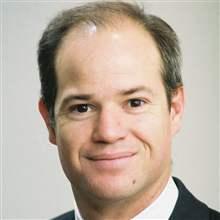In July 2013, the World Bank decided to phase-out lending for new coal-fired power plants in middle-income countries, except in rare circumstances where no financially feasible alternatives to coal exist. This decision was made for a combination of reasons including concerns about local air pollution and global climate change, as well as evidence that these projects have little trouble attracting private capital without World Bank involvement. Now, policymakers are considering whether the World Bank’s policy should also cover projects designed to retrofit existing coal-fired power plants in middle-income countries by adding scrubbers and other technologies that increase efficiency and reduce air pollution.
There are several fundamental questions underlying this debate: Is financing coal power plant retrofits a good use of World Bank resources? If so, should the World Bank insist on the use of best available technologies when it finances these retrofits? These questions are vitally important, as retrofit technologies are designed to minimize toxic air pollutants, including soot and smog, which are both dangerous for human health and the world’s climate. Older coal plants without retrofit technologies are less efficient, and emit more pollutants per unit of coal burned than those with retrofits applied. Evidence shows that soot and smog can cause respiratory illness and asthma, especially in children and elderly people, and can diminish local agricultural production by reducing sunlight. Furthermore, in many countries coal plants are the single largest source of carbon dioxide emissions driving climate change.
To help inform the policy debate, this analysis surveys the technologies in use in more than 2,000 coal-fired power plants currently in operation, under construction, or planned in middle-income countries. The findings reveal that roughly 70 percent of these power plants rely on old, inefficient technologies. Retrofitting these plants would reduce pollution, increase efficiency and save lives. In middle-income countries that do not mandate coal retrofits, the World Bank could play a helpful role in financing those improvements, particularly as part of broader policy reforms designed to reduce climate pollution and increase efficiency across the power sector.
Importantly, however, the data also show that important qualifications should be made. First, because coal is a major source of greenhouse gas emissions and retrofits are likely to keep coal plants operating longer, the World Bank should insist that retrofit projects occur within a context of national and local policy reforms designed to abate greenhouse gas pollution. Toward this end, the World Bank should continue to help countries build capacity to adopt and enforce climate pollution controls and other offsetting actions and policies. Second, the World Bank should insist that projects it finances use best available pollution control technologies. Already, the substantial majority of coal retrofits completed to date in middle-income countries have used best available technologies. These retrofits were almost universally financed exclusively by private capital. The World Bank should not use its capital to support inferior retrofit technologies that are below the standards already adopted by the private sector in middle-income countries.




